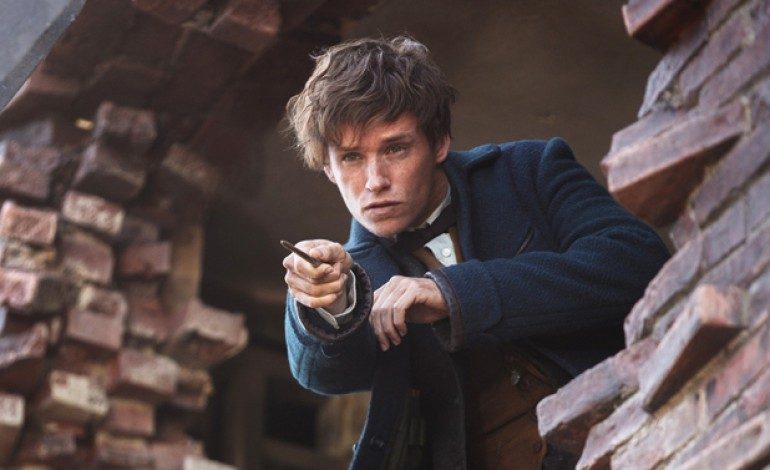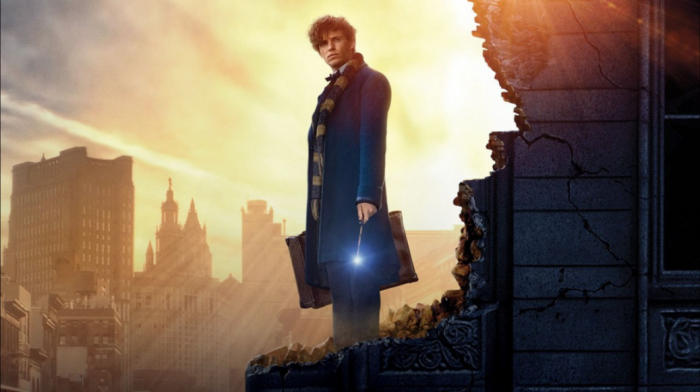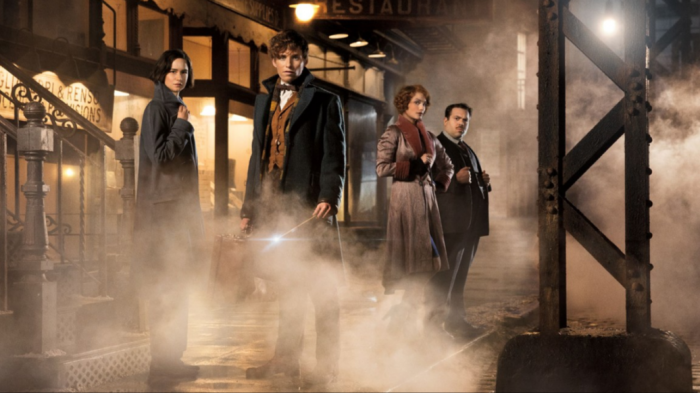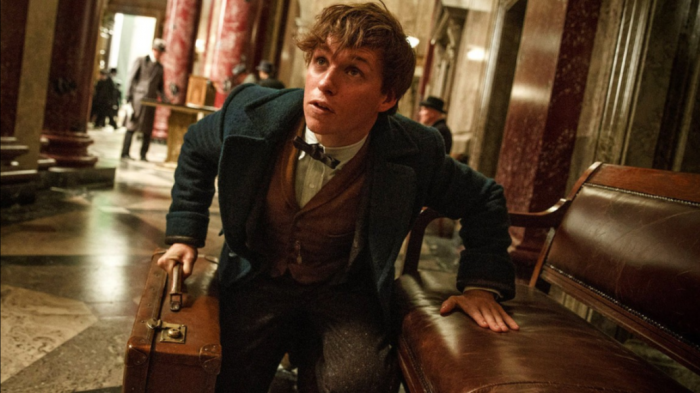

Wizards and muggles, the world of Harry Potter is expanding. When the spin-off franchise, a prequel entitled Fantastic Beasts and Where to Find Them (a title that eventually became a part of the curriculum at Hogwarts), was first announced, it was difficult not to be a tad cynical. Furthermore, as shortly before the movie made its world premiere to the devout, a second announcement came roaring in that the movie would be the start-up for a five-film franchise. From a skeptic came the alarm bells. And with good measure, for while reboots and prequels and sequels and whatnot are all the rage (and always really have been), we’ve been burned before. Perhaps the sacred world of HP should be left well enough alone.
But before drifting into “Franchise Filmmaking and What to Do With Them,” it should be stated that Fantastic Beasts and Where to Find Them is a mostly agreeable, fairly charming and sometimes even magical affair. It helps, beyond question, that the shaping hands (not including the Warner Bros. executives hoping to boost one of their prized cash cows) behind this new origin tale know this wizarding world very well. Director David Yates, the man behind the last four Harry Potter titles, is well versed in the geography of the land and can clearly – and playfully – maneuver the stop and go narrative rhythm these tales glide by, as well as artfully mask some of their weaknesses. Most significantly, Fantastic Beasts comes scripted by J.K. Rowling herself. We’re in good hands, even if this sometimes grim, other times muddled “pilot” episode could use a few spots of spirit gum in forthcoming installments.
The action takes place in New York, 1926. Newt Scamander (Eddie Redmayne) is freshly off the boat from England. Upon entering Ellis Island, this awkwardly situated, yet stylishly tailored and anachronistically coiffed man arrives with nothing but a suitcase, albeit one that rumbles and stirs and threatens to unlock itself in inopportune times. We learn he’s a magizoologist, something of chum to Albus Dumbledore (who does not make a cameo) and the contents of his suitcase is essentially an entire nature preserve of wizardly animals and creatures, each endangered and misunderstood and also quite illegal – the Magical Congress of the United States of America (The Yankee equivalence of the Ministry of Magic) is quite clear on this, which proves something of a problem for Newt. As well-intentioned and as sensitive an intellect he might be, he finds tremendous difficulty in keeping his animals on a leash.
Invariably, a few get loose and begin to wreck havoc throughout the Big Apple. Elementally, that’s much of the plot of Fantastic Beasts as Newt along with his new allies – MACUSA auror Porpentina Goldstein (Katherine Waterston), her sister Queenie (Alison Subol) and Jacob (Dan Fogler), a No-Maj, the American version of a muggle – scramble to get these creatures back. It’s a silly plot and one that plays out like an elaborately designed adaptation of Pokémon Go, even if it allows a visual playground for Yates, cinematographer Philippe Rousselot and a talented team of visual effects artists to run amok. Yet, there’s a rich tapestry of world-building that surrounds Fantastic Beasts, a Rowling specialty. For the film is at once engaged in the bureaucratic behind-the-magic principles of ethics and law (which loomed around the edges of Harry Potter) as well as alert socio-political allegory. Both angles frame, guide and deepen this first chapter adding sustenance and credibility to Rowling’s re-visited fabled world.
For outside the creatures themselves – a likely favorite among many will be Niffler, an impish furry duck-like animal with a penchant for thievery – Rowling is just as interested, if not more, in the intersection of wizards and witches who must live in the shadows alongside the No-Majs. Parallels to Bryan Singer’s X-Men films are a given, as are the allegories they present; a line of dialogue in Fantastic Beasts even goes so far as include laws that prohibit the marriage of wizards with No-Majs. What on earth could that possibly represent? Rowling takes it a step further with rooted opposition on the ground in the form of Mary Lou Barebone (Samantha Morton), a stern magic-fearer who wages war on the streets as well with her own adopted children, even as one of her own holds a secret that threatens to unravel the whole family business. Make no mistake, cuddly critters and adorkable Redmayne aside, the edges of Fantastic Beasts are darkly-tinted and grim. Once the show is nearly complete, it’s easy to suss out that much of the events of Fantastic Beasts were mere window dressing until get to the darkness yet to come.
Of which can be a bit maddening. For Rowling, for all of her gifts as worldly admired novelist and catalyst to get to a generation of children interested in reading, Fantastic Beasts shares many of the cinematic problems that plagued the Harry Potter films. Everything is clicked and paced in an effort to get the next climax, then the next one and so forth. Its a quality that can be rewarding for readers eager to unlock a new cliffhanger, but dangerous for cinematic storytelling as narrative (and especially character) momentum is stalled for another gotcha twist. For this, the characters in Fantastic Beasts are largely ciphers, even Newt, the star of the franchise. Very little backstory or even a glimpse of one can be traced within this origin machine. And it is a machine, a beautifully, elaborately orchestrated one brimming with the bells and whistles that can only be afforded the priciest of studio blockbusters. One capable of charm, whimsy and magic, but held together with the tissue of capitalism.
Verdict: 3 out of 5
Following the massive Harry Potter series (first in book form, than as cinema), J.K. Rowling doubles down in her wizarding world with this first chapter in what will be a multi-film franchise prequel series. While there’s creaks and edges that still need to be refined – not too mention loads of confusing world-building yet to be established – Fantastic Beasts is mostly effective. Beautifully made and ambitiously layered, if the film isn’t quite exactly where to find a cinematic masterwork, there’s a suggestion this franchise may spark one before concluding.



